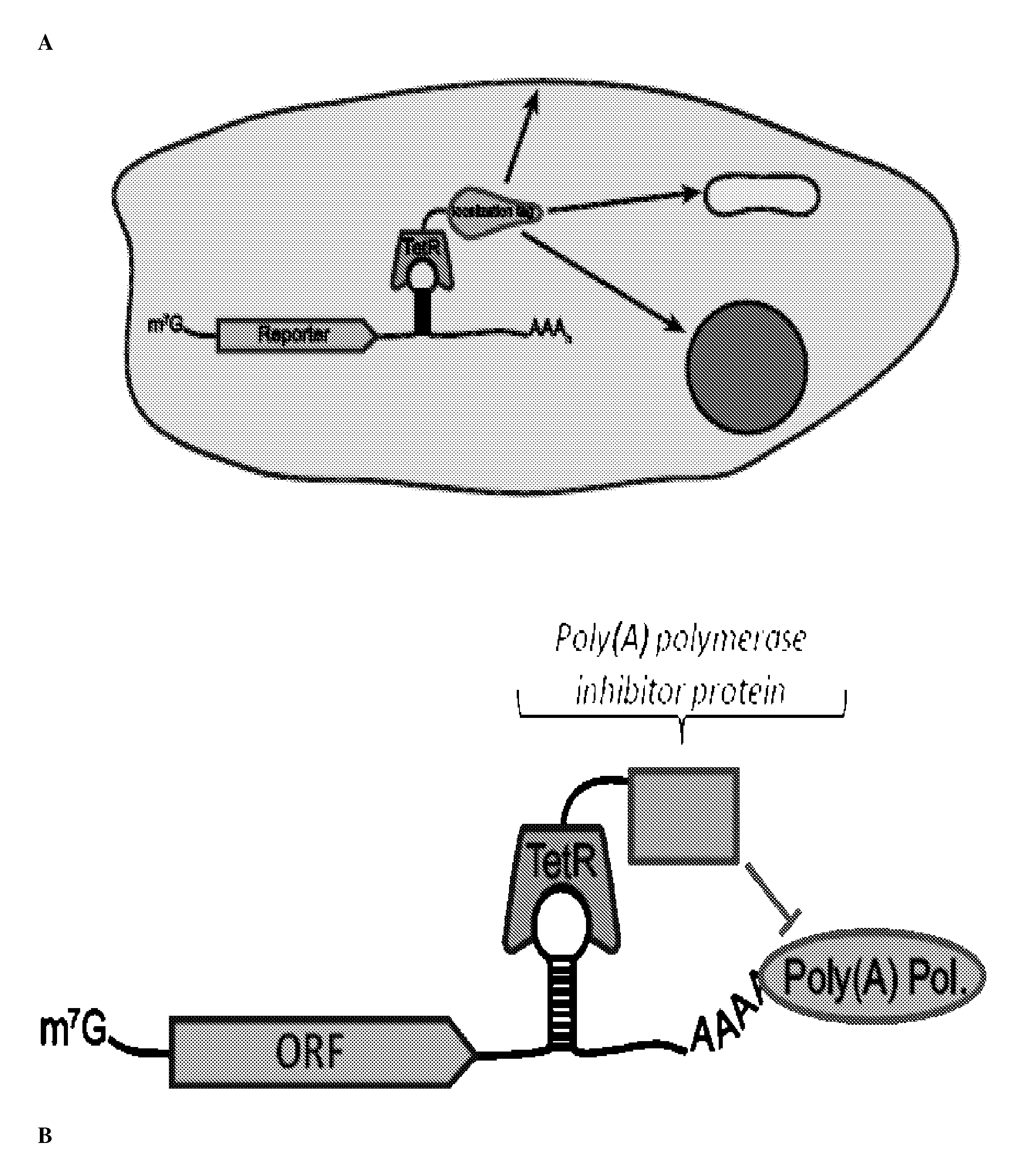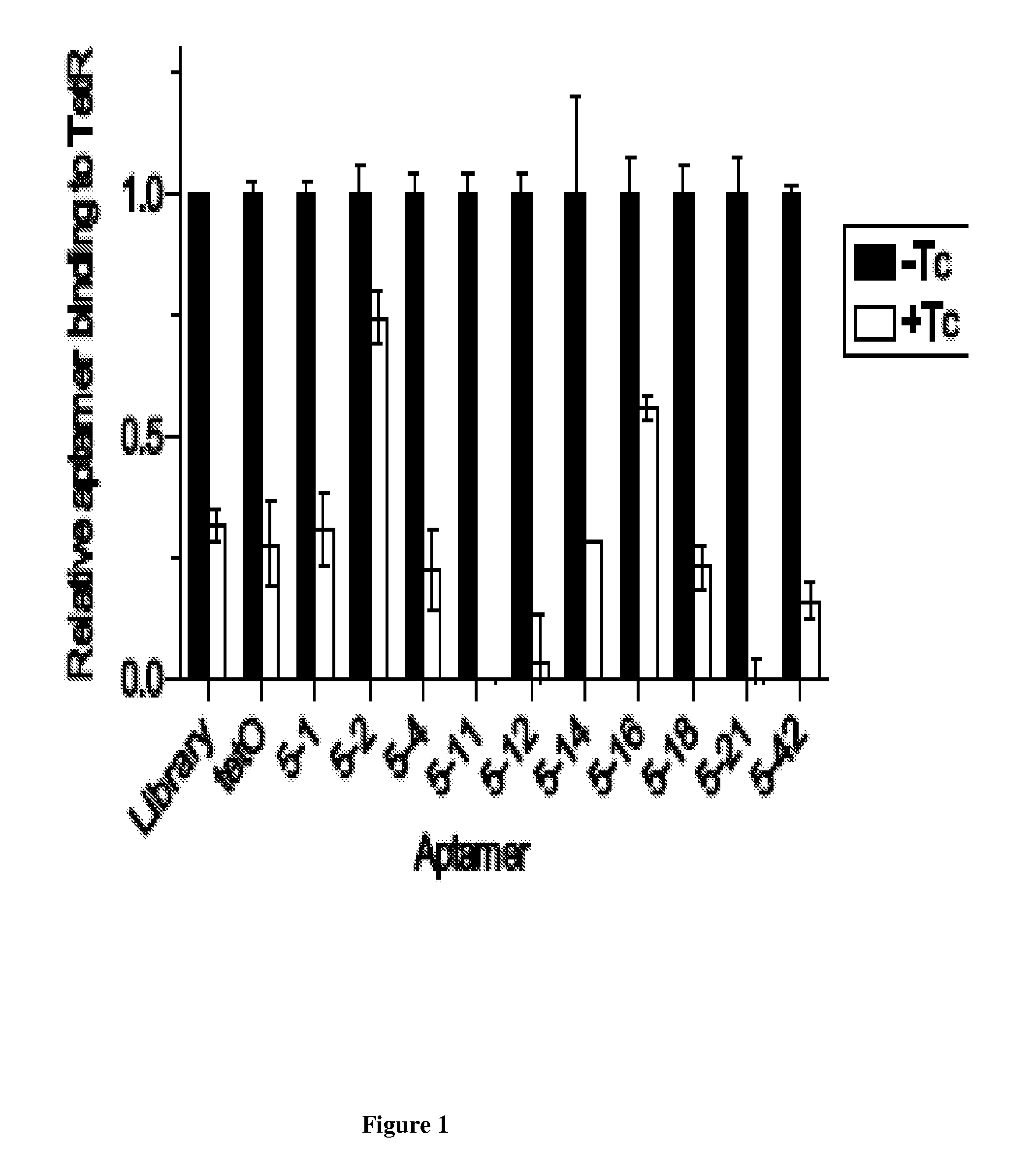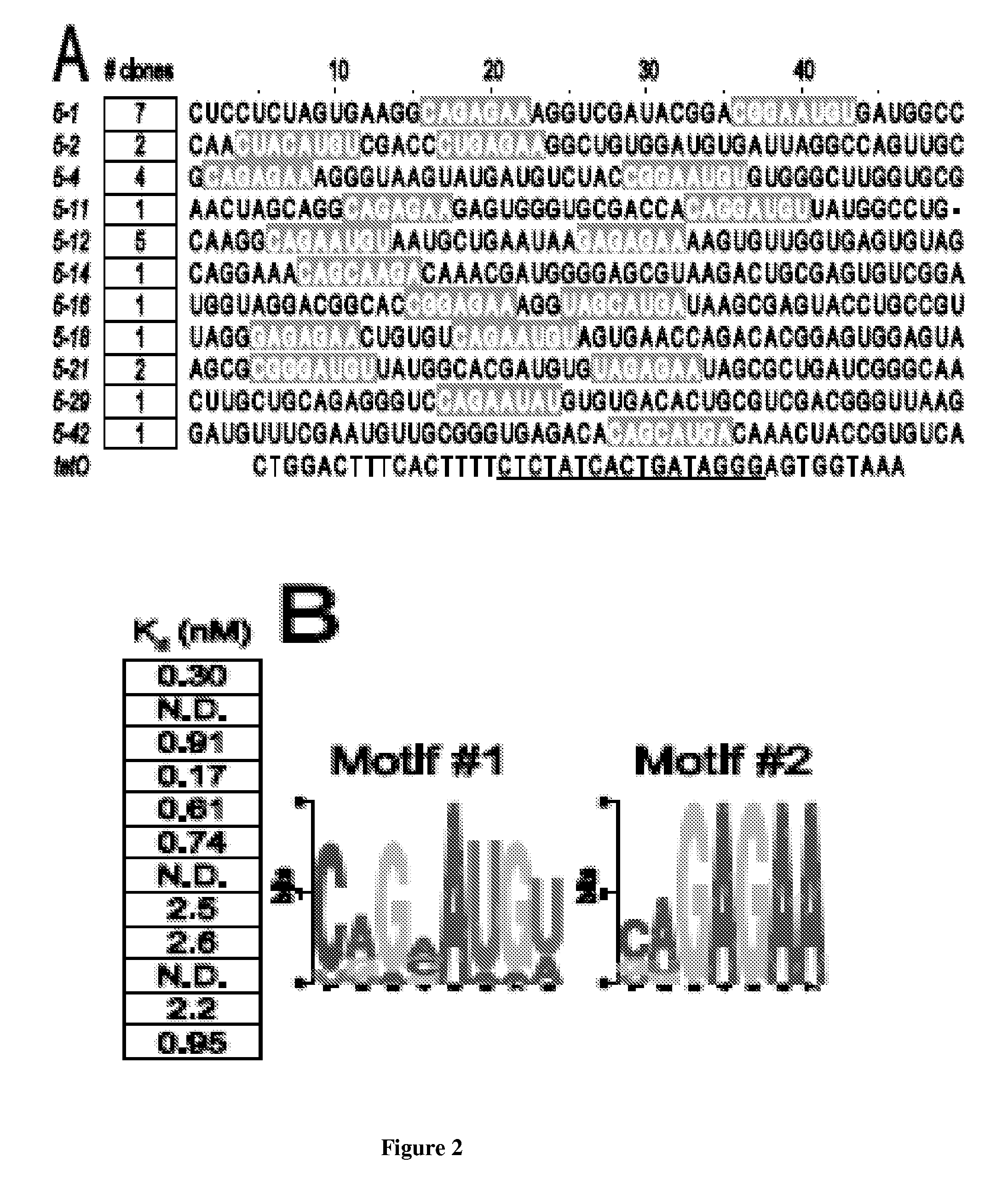Post-Transcriptional Regulation Of RNA-Related Processes Using Encoded Protein-Binding RNA Aptamers
a technology of rna-related processes and encoded protein, applied in the field of gene expression, can solve the problems of not always adaptable to studying essential genes, rna interference only useful, and inapplicability of techniques in less commonly studied organisms
- Summary
- Abstract
- Description
- Claims
- Application Information
AI Technical Summary
Problems solved by technology
Method used
Image
Examples
example i
Recombinant Tetracycline Repressor Protein Expression and Purification
[0296]The tetracycline repressor protein (TetR) gene was cloned into pET24a(+) (EMD Chemicals) vector between the EcoRI and HindIII sites, and this construct used to produce recombinant TetR-His6 with an N-terminal T7 tag. Briefly, BL21(DE3) cells harboring the pET24a-TetR-His6 plasmid were grown to an OD600=0.5-0.7 in Terrific Broth® media containing 50 μg / mL kanamycin before induction with 1 mM IPTG and further grown at 37° C. for 5 hours. Cells were harvested by centrifugation, resuspended in lysis buffer (50 mM Tris-HCl, 100 mM NaCl, 5% glycerol, 5 mM β-mercaptoethanol, 1 mM imidazole, pH 8 and Protease Inhibitor Cocktail VII (Research Products International Corp.)) and lysed using sonication. The lysate was cleared by centrifugation and the supernatant loaded onto a Ni-NTA column pre-equilibrated in lysis buffer. The column was washed with 20 column volumes of washing buffer (10 mM imidazole in lysis buffer) ...
example ii
Systematic Evolution of Ligands by Exponential Enrichment (SELEX)
[0297]A single stranded DNA library was used having the sequence:
(SEQ ID NO: 1)CCGAAGCTTAATACGACTCACTATAGGGAGCTCAGAATAAACGCTCAA[N50]TTCGACATGAGGCCCGGATCCGGC,
wherein N=a randomized base. The library was amplified using PCR or reverse transcriptase (RT) PCR as necessary using the primer pair:
5′ Primer:(SEQ ID NO: 2)CCGAAGCTTAATACGACTCACTATAGGGAGCTCAGAATAAACGCTCAA;And3′ Primer:(SEQ ID NO: 3)GCCGGATCCGGGCCTCATGTCGAA.
This dsDNA library was made using PCR and, after agarose gel purification, used as template for RNA synthesis using the AmpliScribe® T7-Flash Transcription Kit (Epicentre Biotechnologies).
[0298]RNA (i.e., for example, approximately 500 -700 pmol) in diethyl pyrocarbonate (DEPC)-treated water was denatured (70° C.×5 min), allowed to cool to room temperature, and refolded in binding buffer (BB): 50 mM Tris-HCl pH 8.0, 50 mM KCl, 5 mM MgCl2, 5 mM β-mercaptoethanol, 5% glycerol, and 0.05% Tween-20. For negative sel...
example iii
Initial Aptamer Binding and Tetracycline Induction
[0300]Tetracycline repressor protein (TetR; ˜200 pmol) was immobilized on Ni-NTA magnetic beads (QIAGEN) in binding buffer (BB; supra). Refolded RNA (˜100 pmol) was added to the protein-bead mixture to a final volume of 500 μL and incubated for 1 h. Supernatant aliquots (˜20 μL), removed both before and after tetracycline addition (100 μM for 15 minutes), was mixed with 200 μL of a diluted SYBR Gold® solution (i.e., for example, 1:10,000 dilution SYBR Gold® (Invitrogen) in 10 mM Tris-HCl, pH 8.0). Fluorescence signal was measured (excitation wavelength=490 nm, emission wavelength=537 nm) on a Fluoromax®-2 fluorometer. Binding to TetR is indicated by a decrease in RNA levels in the supernatant.
PUM
| Property | Measurement | Unit |
|---|---|---|
| Tm | aaaaa | aaaaa |
| lag time | aaaaa | aaaaa |
| lag time | aaaaa | aaaaa |
Abstract
Description
Claims
Application Information
 Login to View More
Login to View More - R&D
- Intellectual Property
- Life Sciences
- Materials
- Tech Scout
- Unparalleled Data Quality
- Higher Quality Content
- 60% Fewer Hallucinations
Browse by: Latest US Patents, China's latest patents, Technical Efficacy Thesaurus, Application Domain, Technology Topic, Popular Technical Reports.
© 2025 PatSnap. All rights reserved.Legal|Privacy policy|Modern Slavery Act Transparency Statement|Sitemap|About US| Contact US: help@patsnap.com



